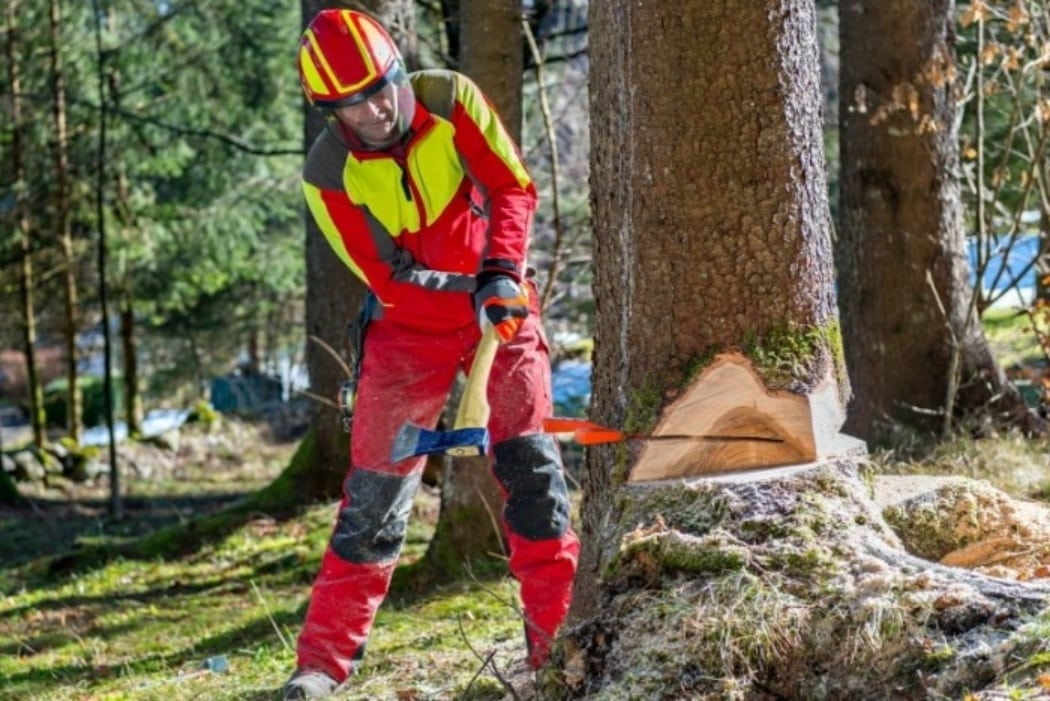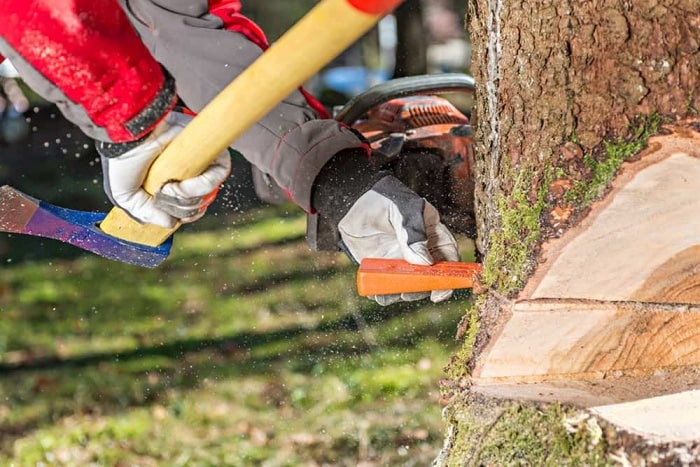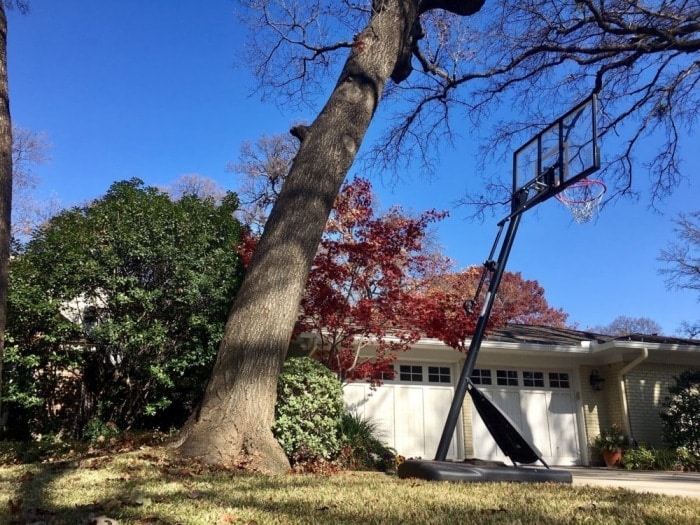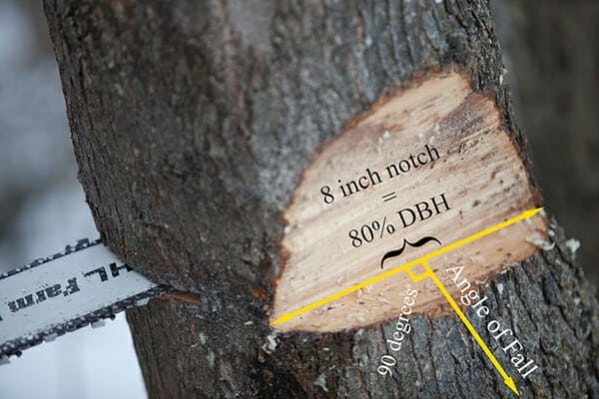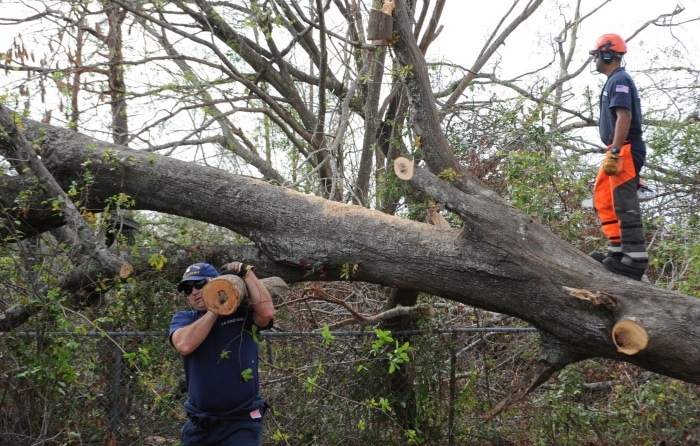In the popular imagination, the task of felling a tree is likely to be one of the jobs that every woodworker would have to deal with.
Although felling a tree can have some unexpected results, most woodworkers always make the best of the job.
When a woodworker fells a tree in an incorrect method, it can even be considered unprofessional.
Yet, there are some cases in which felling a tree can be harder than normal. And one of these is to fell a tree in the opposite direction.
Do you know the method to fell a learning tree in the opposite direction?
You need to assess the status of the tree to give a good way. Then, you can do some calculations to make the undercut and back cut.
Keep in mind your safe position so that the tree will not hurt you. Let’s refer to all the detailed info below!
What Causes A Tree To Lean In The Opposite Direction
You may be curious about the causes why the tree keeps leaning in a certain direction. There are many causes you can see.
One cause that makes a tree lean in a particular direction is the mass of the branch. As a result, a leaning tree is often a large, heavy tree or a tree with long, big branches.
Another cause is that a tree has been growing to absorb the sunlight or avoid some larger objects. For instance, a smaller tree is usually away from a bigger tree which is preventing the sunlight.
Sooner or later, it looks rather dangerous to cut down a leaning tree, particularly if that tree stays in your backyard. Yet, by taking notice of some precautionary steps, the tree is likely to fall in the expected direction.
If you do not fully believe in your abilities, it is good for you to follow the guide below or ask others for help.
The Useful Tools You Need
Even if you use tools under any condition, it is necessary to preserve them in flawless shape. Unluckily, no one can cut down trees with their bare hands, even though they wanted to do it.
Two fundamental and much-needed tools are an ax and rope. Ultimately, you have to prepare an ax for making two kinds of cuts on the leaning tree. Also, the rope is to pull it down.
There are other additional tools to do the task as well.
How To Fell A Leaning Tree In The Opposite Direction
Here is a list of must-do steps to cut a leaning tree in opposite direction:
Step 1: Assessing the situation
How to cut down a leaning tree safely? The first and foremost thing you have to do is assess the situation.
Before you start the work, it is sensible to assess the status of a leaning tree and estimate the number of tasks that would be required to cut down that tree.
Accordingly, your first action is to indicate the center of gravity of the tree. If the direction of lean is to your house, this evaluation can be tougher than usual.
In other words, the first step you have to do is indicate the offset center of gravity of the tree. The center will make sure that when cutting the tree by the root, it will collapse in a certain direction.
Then, you put a mark on the offset center and clean up the area around the tree. Once you are done, let’s move to the second step.
Step 2: Deciding the back lean
The step will demand lots of calculations. After deciding the falling direction as well as the offset center, it’s time to measure the back lean with measuring tape.
These calculations are even more important in cases of cutting down a heavy tree.
While you stand away from the leaning tree, at a location 90 degrees to the planned direction of fall, you look at the top of the leaning tree and use a heavy string to mark the position on the ground.
The back lean is the length from this position along the falling direction to the apex of the intended undercut.
The apex point will stay at the front side of the hinge as well as the pivot point for the leaning tree.
Once you calculate the back lean, the next one is calculating the diameter of the stump. This calculation will decide the length between the front side of the hinge and the back edge of the leaning tree.
It would be a great help when you want to measure the sum of segments after cutting down.
Now you should move to the next step.
Step 3: Doing the undercut
In this step, you should take a suitable ax for the task and create the undercut. The undercut should be along with the intended direction of fall.
In other words, it needs to be in the opposite direction of the back lean.
The undercut consists of two smaller cuts. The first one is in the direction of 90 degrees to the trunk. The other should stay above the first chop, and it needs to attach to the internal side of the first one.
Make sure that you will not cut more than one inch of the thickness of the undercut.
The intention of making the undercut is to produce a wedge-shaped portion in the planned direction of fall. Most importantly, it helps the entire job become more easy-going.
Step 4: Doing the back cut
Another type of cut you need to do is the back cut. It is also a very essential step during the process and particularly if you are approaching a no-wedge shape.
The back cut needs to be in a higher position compared to the face notch cut. The distance between them should be at least one inch.
Once doing the back cut, watch the tree’s every move as it may begin falling from this cut.
Step 5: Making sure of your safety
Here, the ultimate thing you need to do is make sure that you are in a safe location as the tree will begin falling.
If the tree is rather large and heavy, and it may fall on you, it can cause a serious accident and more severe death.
You can also check weather conditions as the strong wind. And heavy rain can change the direction of the fall.
Conclusion
Cutting down a leaning tree in the opposite direction is likely to be a hard task, still, it is possible to fell that tree.
If you keep in mind to follow the aforementioned guidelines step by step with appropriate tools, the tree will eventually fall in the planned direction without dangers.
Read more: How To Cut Tree Limbs Over Your House?

